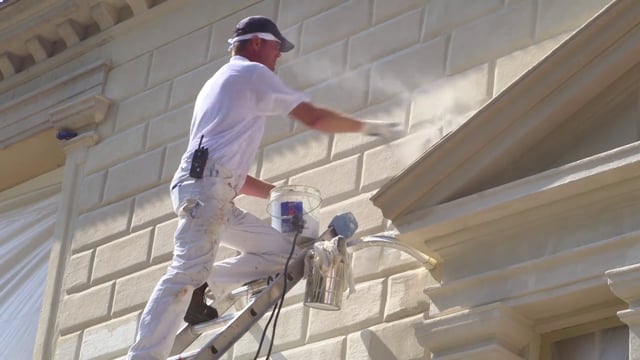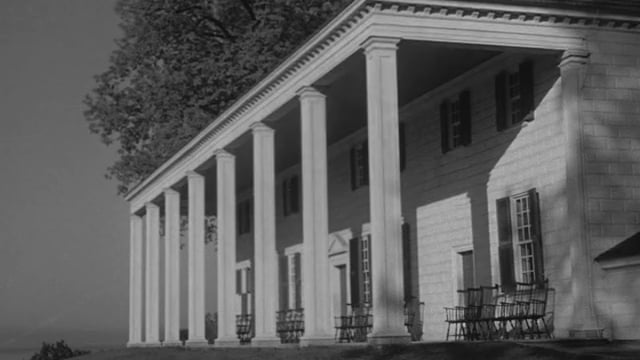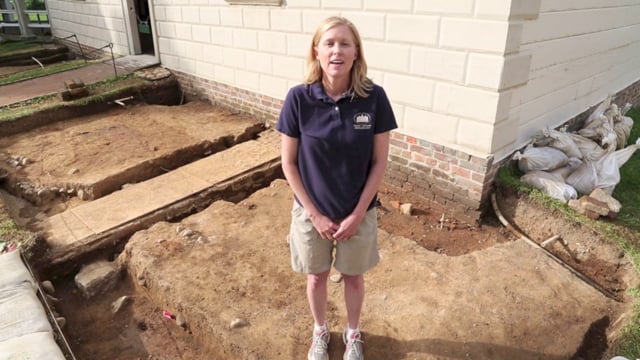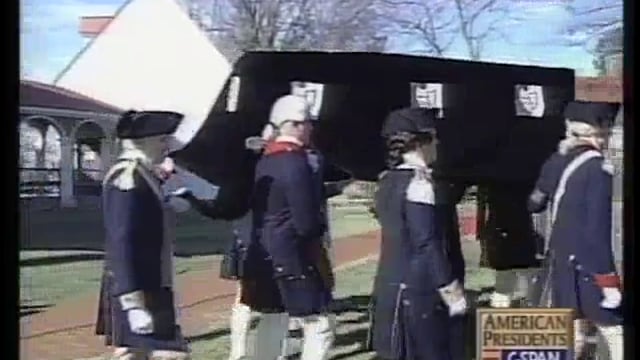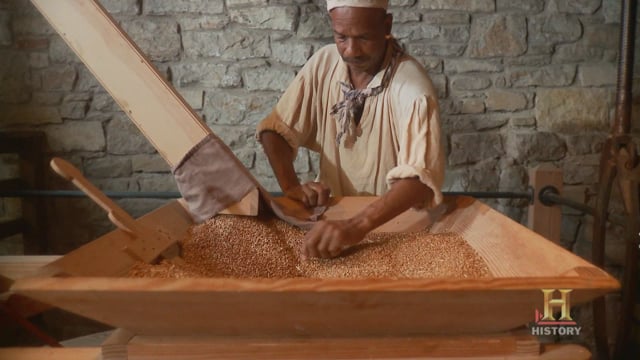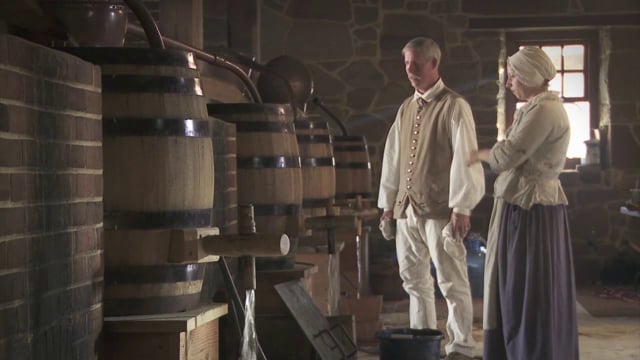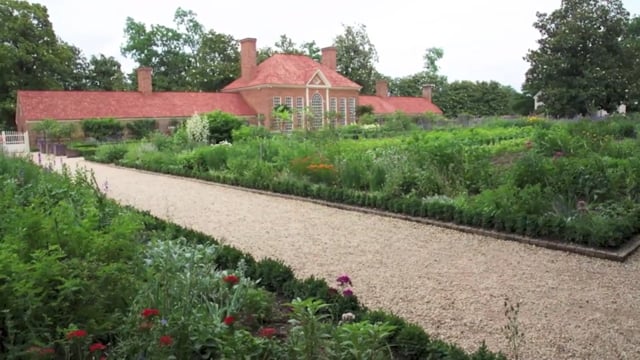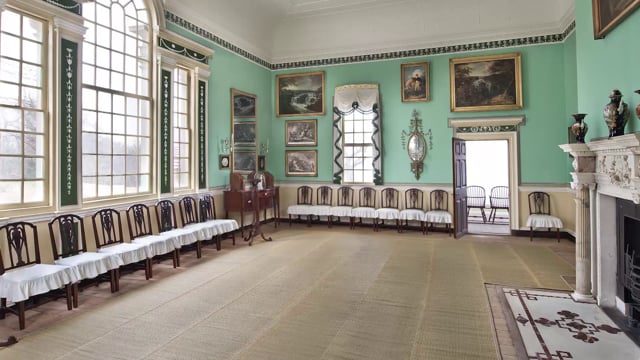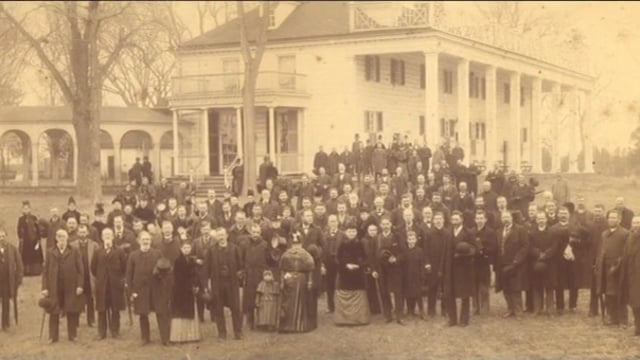1850
The Last Washington at Mount Vernon
John Augustine Washington III became the owner of Mount Vernon in 1850. Unable to afford the estate's maintenance, he offered it for sale in 1851. After the Commonwealth of Virginia and the federal government turned him down, Washington agreed to sell the Mansion and 200 acres of adjoining land to the Ladies' Association in 1858.
Forming the Mount Vernon Ladies' Association
In 1853, Louisa Cunningham observed the dilapidated Mansion from a boat in the Potomac River. She lamented to her daughter, Ann Pamela Cunningham, that she “was painfully distressed … Why was it that the women of this country did not try to keep it in repair, if the men could not do it?"
Accepting this challenge, Ann, a mild-mannered 37-year-old from rural South Carolina, founded the Mount Vernon Ladies' Association in 1853, with the express purpose of saving Washington's home for future generations. In order to raise $200,000 - an incredible sum in the pre-Civil War period - to purchase the rapidly declining Mansion from the Washington family, Miss Cunningham and her original board of 12 determined women organized a campaign that would captivate the entire nation. In doing so, they planted the seeds for the preservation movement in America.
The First Ladies
With a civil war looming, Ann Pamela Cunningham realized that in order to avoid regional discontent and to establish a broad fundraising base, the campaign to save Mount Vernon would have to be national in scope. Her idea was to establish a network of supporters, all working under the direction of a core group of ladies, each of whom would represent a given state. A total of 13 women, with Cunningham as the Regent, and the other serving as Vice Regents, made up the first council.
Raising Funds
Edward Everett, one of the greatest speakers of his age, tirelessly traveled the nation, delivering two-hour orations on the first president, and donating his lecture fees to the purchase of Mount Vernon.
Saving the Mansion
In 1858, the piazza was nearing collapse and was propped up by old ships' masts. Although the Association did not actually take possession of Mount Vernon until 1860, John A. Washington III allowed repairs to begin even before his family moved out of the Mansion.
Modern Preservation Efforts - Sand Casting
What did they buy?
This bird's-eye view of the Mount Vernon estate shows the 200 acres purchased by the Mount Vernon Ladies' Association - the core of what had been George Washington's 8,000-acre plantation.
With the success of the fundraising campaign behind them, Cunningham and the Vice Regents began the daunting task of preserving the site. The first priority was to stabilize and repair the dilapidated buildings.
...we need not have anything to do with politics - ought not to have - no sectional divisions should affect our position - we must bide the storm, and then the officers would meet and pledge themselves to continue in harmony to carry out the purposes for which we are a chartered body, and show to the world that we at least had profited by the warning counsels of Washington.
Ann Pamela Cunningham, 1861
War comes to Mount Vernon
Between 1861 and 1865, as the Civil War raged, restoration stopped at Mount Vernon. Soldiers from both sides visited the site, but they were required to lay down their arms before touring.
Mrs. Halsted
The Vice Regent for New Jersey from 1868 until 1891, Nancy Wade Halsted challenged the Ladies to furnish each room in the Mansion. Eighteenth-century pieces were to be used wherever possible, with more recent Greek Revival and Victorian furnishings filling the gaps. Many decades would pass before the Association could furnish all rooms with original Washington pieces or very similar examples.
The Founders
Twelve founding Ladies of the Association, representing their home states, pose on the piazza in 1870 with the famous Houdon bust of George Washington. Miss Cunningham, first Regent of the Ladies' Association is seated to the right of the bust. The other ladies pictured are Vice Regents in the Association's governing council, a structure still in place today.
Ladies, the home of Washington is in your charge; see to it that you keep it the home of Washington. The Mansion and the grounds around it should be religiously guarded from change - should be kept as Washington left them. Let no irreverent hand change it; no vandal hands desecrate it with the fingers of progress. Those who go to the home in which he lived wish to see in what he lived and died.
Ann Pamela Cunningham to the 1874 Mount Vernon Ladies' Association Council announcing her retirement as Regent
Mrs. Hearst
Phoebe Apperson Hearst served as Vice Regent for California from 1889 to 1918. Mrs. Hearst was an especially generous contributor to the Mount Vernon cause, funding construction of a stone wall along the river shore to protect against erosion, and supporting the installation of Thomas Edison's electrical system.
Preservation
The contrast between the appearance of the new room before 1890 and now reveals the Association's ongoing quest for historic authenticity. This room was once the principal space to display "relics," ranging from the prized Houdon bust of Washington to a monumental equestrian portrait by Rembrandt Peale.
As standards for historic preservation evolved, so did the Association's ambitions to restore Washington's home to its authentic 18th-century appearance. Mansion rooms once filled with artifact cases and dozens of Washington portraits were transformed to recreate a home that reflected the owner's true taste and style. New scholarly research was complemented by microscopic analysis of paint colors, tree ring dating, and archaeology.
In 1981, this Mansion room was the first to be restored to the colors selected by George Washington.
1900
Miss Comegys
Harriet Clayton Comegys of Delaware served as Regent from 1909 until 1927. During her tenure, the gardens and grounds were given greater attention than ever before, marking the first concerted attempt to recapture their appearance during George Washington's lifetime.
Electrifying Mount Vernon
Thomas Edison designed and installed Mount Vernon's first electrical system in 1916. Only after considerable debate did the Vice Regents agree to Edison's proposal, finally being persuaded that the new technology for lighting would be safer than kerosene lamps.
Fire Prevention
Keenly interested in preserving Mount Vernon, inventor and industrialist Henry Ford donated a new fire truck to the Ladies' Association in 1924 and encouraged the installation of fire hydrants and alarms. The Ford Motor Company continues to provide vehicles for Mount Vernon's motor fleet and has sponsored many educational programs, facilities, and traveling exhibits.
Honoring the Enslaved
In 1929, the Mount Vernon Ladies’ Association placed a commemorative marker noting the site of the 200-year old slave cemetery. We believe this marker to be the earliest of its kind on a historic plantation. Despite this official recognition, the burial ground lay unattended in dense underbrush for years.
Restoring the Mansion
The Ladies' Association decided to preserve Mount Vernon as it appeared in 1799, the year of George Washington's death. This required that a 19th-century balustrade, visible in this image on the roof of the piazza, be removed in 1936.
Mrs. Bolton
Frances Payne Bolton, Vice Regent for Ohio from 1938 until 1977, spearheaded the effort to protect George Washington's view across the Potomac River. In 1974, President Gerald Ford authorized funds to establish Piscataway Park on the Maryland shoreline opposite Mount Vernon.
1950
Mount Vernon in Virginia
Interpreting the Estate
Since the 1950's, most outbuildings, including the quarters of the enslaved workers, have been restored, furnished, and interpreted for visitors. The Mount Vernon Ladies' Association remains committed to protecting all features and structures related to George Washington's original plantation.
Reconstructing the Greenhouse
In 1951, George Washington's Greenhouse and Slave Quarter buildings, which burned to the ground in 1835, were reconstructed.
Protecting the Viewshed
As the population of the nation's capital expanded rapidly following World War II, new developments began to threaten one of Mount Vernon's most beloved aspects - George Washington's remarkable view across the Potomac River. Led by Frances Payne Bolton, the Vice Regent for Ohio and a United States Congresswoman, the Association garnered the support of the National Park Service, Maryland neighbors, and environmentalists nationwide to preserve the opposite shoreline for future generations. Efforts to protect the view - which spans 80 square miles - continue today.
New Analysis
In 1979, Mount Vernon launched new research to discover and restore the interior paint colors of the Mansion. In some cases more than 25 layers of paint were analyzed. Over a two-year period, the Mansion was completely repainted according to the findings of expert investigators.
Mount Vernon Slave Memorial
In the early 1980s, a group of citizens began a concerted eff ort to honor the enslaved people of Mount Vernon. In 1982, a reporter from The Washington Post broadly publicized evidence of the forgotten slave cemetery. By 1983, these efforts resulted in action when the Mount Vernon Ladies’ Association dedicated a new memorial, which was designed by students attending the architecture school at Howard University. Its granite column stands within circles inscribed with the words Faith, Hope, and Love.
The Association, in partnership with Black Women United For Action, now holds an annual ceremony at this spot in tribute to the generations of enslaved people who lived and worked here.
Archaeology at Mount Vernon
Mount Vernon's full-time archaeology program has been conducting research here since 1987. Archaeologists study artifacts uncovered in excavations to learn more about daily activities of the Washingtons and the many people who lived and worked at Mount Vernon.
Distinguished Visitors
Mount Vernon has served as a "second home" to presidents, their families, and distinguished world leaders.
President George H. W. Bush and King Hussein of Jordan visited Mount Vernon on April 19, 1989. Eugenia Merrill Seamans, Regent of the Association, led a brisk tour of the Mansion and grounds before the entourage boarded a ship for a cruise back to the nation's capital.
Kitchen Excavations
Restoring the Wharf
Queen Elizabeth II and Mabel Livingstone Bishop, Mount Vernon's Regent, presided at the re-dedication of the wharf in 1991. Restoration of the wharf, built by the Ladies' Association in 1860 near the site of one of George Washington's original landings, was supported by donations from citizens of Oregon, the Regent's home state.
Pioneer Farm
Inviting guests of all ages to learn more about Washington's progressive agricultural practices, the four-acre Pioneer Farm opened in 1993 and serves as a "living" classroom. The Farm represents the more than 3,000 acres Washington cultivated during the second half of the 18th century.
Building a Barn
George Washington designed an innovative 16-sided barn to streamline the time-consuming processing of wheat. In 1870 the treading barn was near collapse. Mount Vernon's carpenters completed a replica and opened it to visitors in 1996, after five years of intensive research and construction. Major support was provided by the W.K. Kellogg Foundation. Today, the barn is the centerpiece of Mount Vernon's four-acre Pioneer Farm.
Wheat Treading at the 16-Sided Barn
Recreating Washington's Funeral Procession
To commemorate the bicentennial of Washington's death, the Mount Vernon Ladies' Association held a moving re-enactment of his funeral on December 18, 1999.
2000
Acquiring the Gristmill
Washington's gristmill, located on his Dogue Run Farm, was a major commercial operation and provided an important source of revenue. The Mount Vernon Ladies' Association has operated the mill as a working replica since 2002.
National Recognition
The President of the United States presented the coveted National Humanities Medal for service to the nation to the Mount Vernon Ladies' Association. From left to right at the 2003 Oval Office ceremony: James C. Rees, President & CEO of Mount Vernon (1994-2012); James M. Walton; former Regent Eugenia Seamans; President George W. Bush; Regent Ellen Walton (1999-2004); First Lady Laura Bush; former Regent Mabel Bishop; former Regent Carew Lee; and Clarence M. Bishop.
Scholarship
Pulitzer Prize-winning author Ron Chernow accepted the first George Washington Book Prize in 2005. The prize is co-sponsored by the Mount Vernon Ladies' Association, Washington College, and the Gilder Lehrman Institute for American History.
Opening of the Ford Orientation Center
From left to right at the ribbon cutting for the Ford Orientation Center: James C. Rees, President & CEO of Mount Vernon (1994-2012); Gay Hart Gaines, Regent of the Mount Vernon Ladies' Association (2004-2007); Sandy Ulsh, then-President of the Ford Motor Company Fund; and Pulitzer Prize-winning author and historian David McCullough.
An Expanded Mount Vernon Experience
The Donald W. Reynolds Museum and Education Center introduces guests to George Washington's remarkable life. Opened in 2006, this expansive facility dramatically advanced the Mount Vernon experience, allowing for a more thorough journey through Washington's unparalleled story.
Living Quarters for the Enslaved
Completed in 2007, this replica slave cabin located at the Pioneer Farm helps share the story of the enslaved communities on the outlying farms of Mount Vernon.
Reconstructing the Distillery
Washington's distillery was one of the largest producers of whiskey in America. After several years of archaeological excavations, research, and construction, the distillery complex opened in 2007. These efforts were supported by the members of the Distilled Spirits Council of the United States.
Making Whiskey at Mount Vernon
Reconstructing the blacksmith shop
To support his expansive farm, Washington had a blacksmith shop built just steps from his iconic home in 1755. This detailed reconstruction was completed in 2009 and has allowed the critical trade of blacksmithing to return to the estate.
Transforming the Upper Garden
Staying true to the Association's mission, preservation of Washington's home and the surrounding landscape continues. In 2011, an authentic Upper Garden reopened to guests after considerable archaeological and historical investigation.
Restoring the New Room
The New Room's 2013-2014 restoration was one of the most extensive in the Mansion and brought back the original grandeur of the space that George Washington spent years designing.
New Room Restoration
I have not houses to build, except one, which I must erect for the accommodation and security of my military, civil, and private papers, which are voluminous and may be interesting.
George Washington to Jame McHenry, April 3, 1797
Washington's Presidential Library
More than 200 years after the general wrote of his dream for a library, the Mount Vernon Ladies' Association completes the George Washington Presidential Library at Mount Vernon with the patriotic support of over 7,000 donors. Erected on the estate, this impressive 45,000-square foot facility was opened on September 27, 2013.
More than 1,200 people assembled at the Washington Library for its grand opening. From left to right on the ceremony stage: Dr. Douglas Bradburn, Founding Director of the Library; Pulitzer Prize-winning author and historian, David McCullough; Curtis G. Viebranz, President & CEO of Mount Vernon; Ann H. Bookout, Regent of the Mount Vernon Ladies' Association (2010-2013); and Fred W. Smith, Chairman of the Donald W. Reynolds Foundation, which provided the lead gift for the Library campaign.
The Library, the only of its kind dedicated to our first president, safeguards original books and manuscripts according to the highest standards. It positions Mount Vernon as the preeminent center of learning about George Washington, where scholars and researchers come together to explore new thoughts and uncover fresh insights about the Founding Era. The Library also serves as a center for educational outreach and leadership training, employing Washington's extraordinary life, achievements, and character as inspiration.
Surveying the Slave Cemetery
In 2014, Mount Vernon launched a project to thoroughly document the locations of individual burials at the slave cemetery, located on an outcrop of land, south of George Washington’s tomb. The goal of this multi-year survey is to commemorate the lives of those free and enslaved individuals who lived and died at Mount Vernon by creating a map showing the exact location of individual grave sites. By 2022, archaeologists identify 86 graves of the enslaved men, women, and children who lived and worked on the property prior to 1860.
Saving Mount Vernon
Lives Bound Together: Slavery at George Washington's Mount Vernon Exhibit
Lives Bound Together: Slavery at George Washington’s Mount Vernon explores the personal stories of the people enslaved at Mount Vernon while providing insight into George Washington’s evolving opposition to slavery.
Mount Vernon: The Story of an American Icon
The exhibit "Mount Vernon: The Story of an American Icon," follows the evolution of Mount Vernon’s landscape from Native settlements 10,000 years ago, to George Washington’s dramatic overhaul of the house and grounds in the late 18th century, to Ann Pamela Cunningham’s innovative campaign to purchase the property in the 19th century and the MVLA’s efforts to restore Mount Vernon to its 18th-century appearance.
The Mount Vernon Ladies' Association Today
The Mount Vernon Ladies' Association embraces the challenge of engaging future generations with the continuing relevance of George Washington's leadership and character. With the help of patriotic donors, Mount Vernon intends to restore George Washington to his proper place in American hearts and minds.
Mount Vernon continues to be managed by an active board comprised of women representing different states across the nation. Because the Mount Vernon Ladies' Association does not receive state or federal funding, it depends on private support to fulfill its mission of education and preservation.





